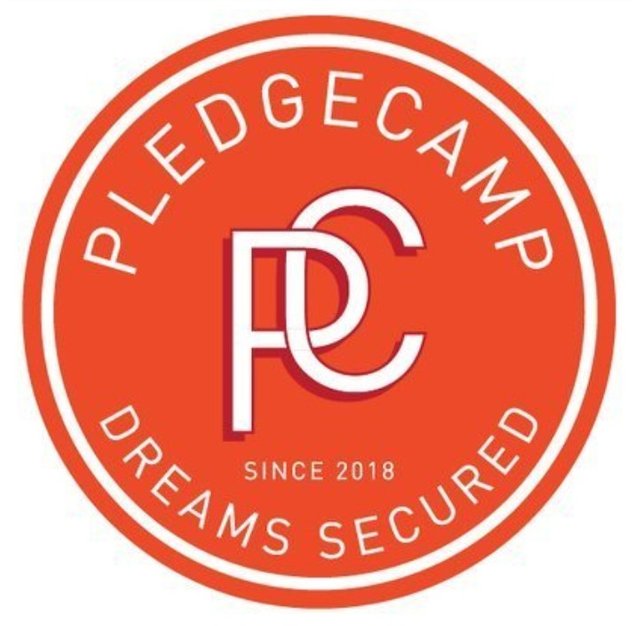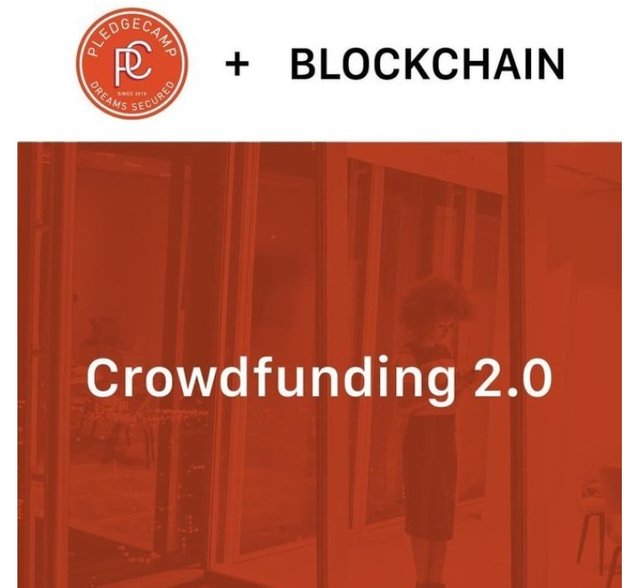PLEDGECAMP: REVAMPS THE CROWDFUNDING ECOSYSTEM USING BLOCKHAIN.
The importance of blockchain technology has proven to be a big game changer in every spheres of life.
The Crowdfunding is a multi billion-dollar market with but with a trust
problem deterring it's smooth and effective operations. The Modern crowdfunding emerged after the 2008 financial crisis, this was the period when many entrepreneurs and business enterprises found it impossible to raise funds from traditional banks and institutions.
Online platforms became the ideal place which allowed entrepreneurs to raise directly from communities of supporters without needing special connections to professional investors.
Crowdfunding also known as rewards-based crowdfunding involves the delivery of goods or services in exchange for a contribution of funds. Online crowdfunding platforms connect projects with backers in exchange for a
percentage, typically 5%.
It is worth noting that rewards-based crowdfunding platforms such as Kickstarter or Pledgecamp do not generally permit the crowdfunding of equity
or token offerings, although this may be included in the future.
It is however necessary to pinpoint some common flaws with the CROWDFUNDING ecosystem. Current crowdfunding platforms lack security features that protect backer
funds and keep project creators accountable. Consequently, the projects on
these platforms exhibit extremely high rates of failure.
Here we consider Kickstarter, the crowdfunding platform with the most brand
recognition. In a study of crowdfunding projects on Kickstarter, Wharton
School professor Ethan R. Mollick discovered that as many as 85% delay
delivery while 14% fail to deliver what was promised.
PROBLEMS
A Lack of Accountability
Once creators successfully raise funds in a crowdfunding campaign, they
spend funds however they see fit. If promised deadlines come and go without
results, backers can do little but wait and hope.
Platforms are complicit in this high rate of failure by not holding creators
accountable to their promises. This is because doing so puts the burden
of responsibility on the platforms as dispute arbitrators or escrow agents,
incurring mediation responsibilities and overhead costs.
Instead, pledge are labelled as “donations”, making it nearly impossible for
backers to recoup their losses through legal means.This leads to
disappointment and damaged trust in the ecosystem.A Lack of Transparency
Crowdfunding campaigns end after a defined amount of time, which incentivizes creators to prioritize marketing and raise as much money while
time is available.
A slick marketing video and description page are effective at raising funds,
so road-mapping and company disclosures take second priority. Backers are often left to analyze highly marketed campaigns without substantive
information from the creators.This leads to information asymmetry between creators and backers which
prevents backers from protecting themselves. Because Kickstarter privately
verifies a creator’s personal information, backers may see this as validation
of the truth of a campaign’s marketing claims by allowing the project to list.Centralization
Centralization places additional constraints on crowdfunding’s ability to scale.
Currently, Kickstarter creators must reside in one of 22 countries, equivalent
to only 11% of countries in the world.[30] Challenges around handling multiple
currencies and a centralized screening process for listing incurs massive
overhead and logistics to achieve at a global scale.
In addition, centralization means that the parties in control are able to
implement whatever restrictions and exclusionary policies they wish—a
problem with institutional investing that crowdfunding emerged to address in
the first place.
SOLUTIONS OF PLEDGECAMP
Backer Insurance
Backer Insurance is a security feature unique to Pledgecamp that enforces
accountability by empowering backers to monitor the usage of their
contributions. A smart contract holds a percentage of campaign funds in
escrow, which is released to creators as project milestones are met. Milestones
are defined before funds are raised so that the expectations between creators
and backers are clear from the beginning.Campaign Deposits
Before starting a new campaign on Pledgecamp, creators must place a
refundable security deposit prior to listing. This Campaign Deposit creates a
financial penalty for spam on the network and incentives creators to be more
transparent while promoting their projects.
Campaign Deposits are fully refundable provided the creator performs
enough “transparency tasks” including, but not limited to, uploading business
registration documents, identification, proof of contracts, intellectual property
registrations, code repositories, personal references, or even answering
questions on live video. Each action refunds a fixed amount of the deposit until
it is fully refunded.
For example, a creator may choose the five disclosures most applicable to their
project and reclaim their deposit with those. Although the blockchain is unable
to automatically verify that these disclosures are genuine or valuable, making
them public allows the crowd to scrutinize and evaluate them. Backers may
use this increased information to ask further questions and make educated
decisions. Partial or full refunds of Campaign Deposits are returned once the
funding period is over.
If a creator declines to perform these tasks, any unrefunded Campaign Deposit
will be forfeited when the campaign is launched. Creators will be left to explain
to backers why they preferred to lose their deposits rather than be more
transparent.Decentralization
Ultimately, the purpose of Pledgecamp is to align incentives to create an
open and distributed model of innovation. In crowdfunding, the most valuable
resource is the crowd itself, with all of the skills, knowledge, and connections
contained within. Pledgecamp strives to enable what we call the “Smart
Crowd”: an empowered user base that contributes more than just monetary
value to the ecosystem.
TOKEN ECONOMY
A two-token system that encourages trust and long-term staking“The important thing is that for the token to have a stable
value, it is highly beneficial for the token supply to have sinks places where tokens actually disappear and so the total token quantity decreases over time.
A two-token economy involving Pledge Coins (PLG) and Camp Shares (CS)
powers the Pledgecamp ecosystem. The design of this token economy prioritizes stable token value as a medium of exchange (see Appendix) and incentivizing a distributed user base to cooperate for the long term health of
the platform.
Pledge Coin (PLG)
A Pledge Coin is an ERC20 token on the public Ethereum blockchain that
enables key features of the platform.
TOKEN DETAILS
PLEDGECAMP TOKEN DETAILS
Token Name: Pledge Coin
Token Type: ERC 20
Token Supply: 10,000,000,000 PLG
Token Price: $0.01
For more information, visit:
Website: https://pledgecamp.com/
Pledgecamp whitepaper: https://pledgecamp.com/__pdf/whitepaper-pledgecamp-9-23.pdf
One paper: https://pledgecamp.com/__pdf/pledgecamp-onepager_181122.pdf
Join the whitelist: https://pledgecamp.com/whitelist
Official telegram channel: https://t.me/pledgecamp
Twitter: https://twitter.com/pledgecamp
Writer’s BountyOx username: Ednar


✅ Enjoy the vote! For more amazing content, please follow @themadcurator for a chance to receive more free votes!